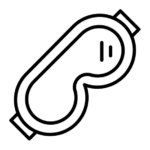Wasps are a frightening pest for many people. Setting up their nests near homes, they fly swiftly around doors and entryways and pack a powerful sting if they feel threatened.
Yet not all wasps sting, and they are a beneficial insect in some ways. Without wasps eating insects, there would be a gaping hole in the food chain. With about 30,000 identified wasp species, some are more common pests for humans than others. All this makes it important to know what kind of wasps are causing you problems before you attempt to get rid of them — or even they are wasps at all. Learning more about bees and wasps is key in safely ridding your property of an infestation.







